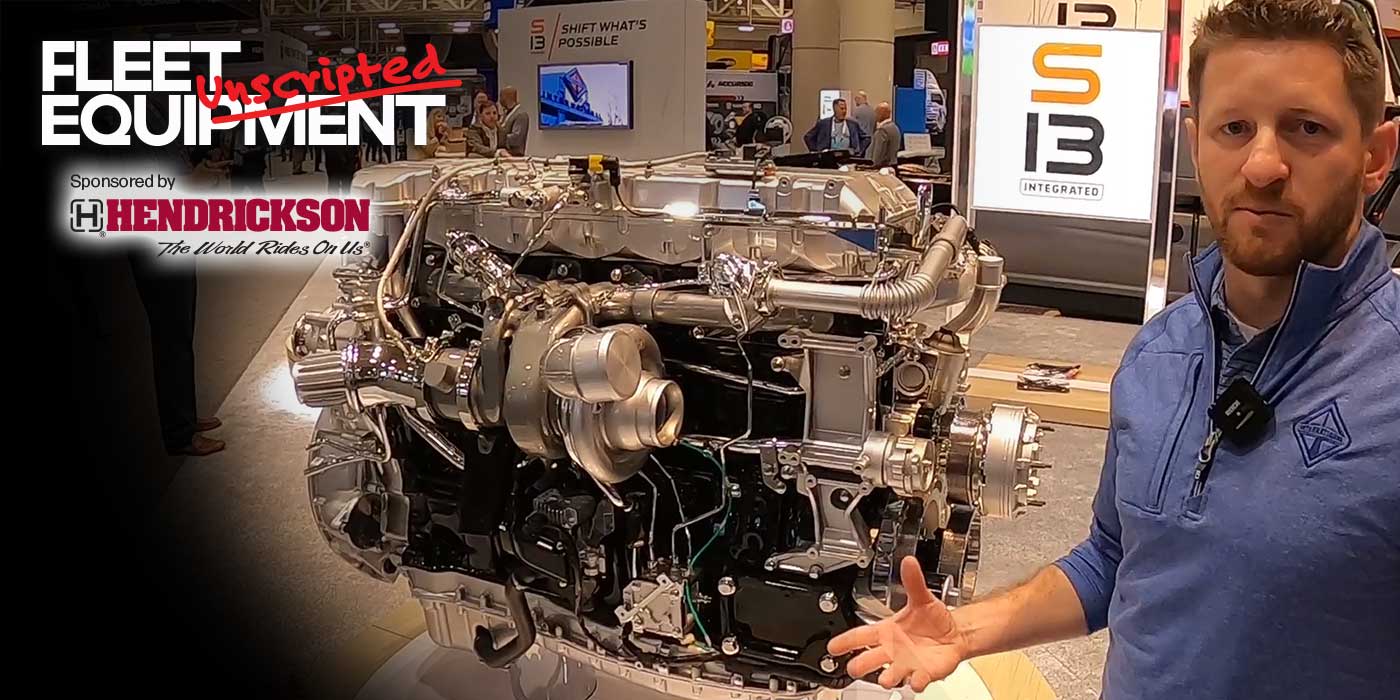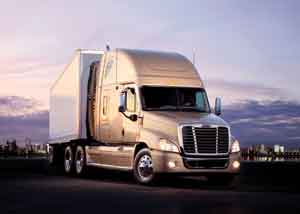 “Gear fast. Run slow.” That’s advice that we’ve all heard about drivetrain specs from both truck and engine manufacturers for years. Some over-the-road fleet managers have heeded the advice. Some have not yet done so. With diesel hovering around $4 per gallon in many areas of the country, however, it’s advice that has never been more applicable than it is today.
“Gear fast. Run slow.” That’s advice that we’ve all heard about drivetrain specs from both truck and engine manufacturers for years. Some over-the-road fleet managers have heeded the advice. Some have not yet done so. With diesel hovering around $4 per gallon in many areas of the country, however, it’s advice that has never been more applicable than it is today.
Few would argue that the engine is the heart of any line-haul tractor, but just as a human heart is of no value standing alone, an engine, no matter how carefully spec’d, needs a transmission and rear axle behind it. And those two components need to be spec’d as vigilantly as the engine for the system to deliver acceptable performance. For many years, truck gearing specifications were a compromise between performance and fuel economy.
Since fuel cost, for many years, has been the leading equipment-related cost for most long-haul operators, most fleets geared their trucks toward optimum fuel economy versus driver-pleasing performance. Some drivers in trucks geared for best fuel economy could compensate for any reduced highway performance by downshifting prematurely and more often to keep the engine RPM in the peak horsepower range. Driving this way, of course, can defeat the purpose of the original specifications.
Times past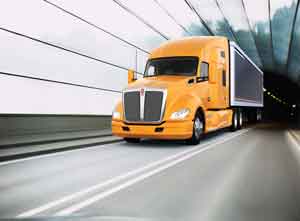
Scott Perry, vice president of supply management for the fleet management solutions division at Ryder System, said, “Engines of a decade ago liked to be run up as high as possible in RPM. This is not the case anymore. Today’s engines operate in a very low RPM range with maximum torque. Optimal peak torque may be obtained around 1,100 RPM. Torque drops dramatically when you get up in the neighborhood of 1,500 RPM, so revving up an engine in a desire to get more power simply results in using more fuel and degrading engine performance. It’s very important to train drivers to understand the technology they are using, along with progressive shifting and controlling idle time and road speed. For every mile per hour you drop road speed, you can pick up about a 10th of a mile per gallon in fuel economy.”
Some years ago, Caterpillar offered an example of how gearing could affect the performance and fuel economy of older engines. Consider two properly spec’d tractors, both with 3.36 axle ratios. The important difference between the two tractors was the engine ratings. One had a 625 HP, 2,050 lb.-ft. engine; the other a 550 HP, 1,850 lb.-ft. engine. At a cruising speed of 65 MPH, the 625 HP tractor would provide only 44 more reserve wheel horsepower compared to the 550 HP tractor, not the 75 engine horsepower difference between the two engines rating.
It could have been worse. The fleet manager could have spec’d the higher horsepower tractor with a 3.25 axle ratio to maintain lower engine RPM at 65 MPH. If you were to compare that to a 550 HP tractor with a 3.55 axle ratio, the new tractor would only have a seven reserve horsepower advantage at the drive wheels at 65 MPH. The driver might very likely start to downshift early and voice dissatisfaction with the performance of the new 625 HP tractor.
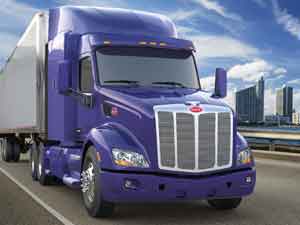
EPA ‘07 emissions regulations introduced technology, adopted by most fleets, that saw a degradation in fuel economy. This was a result of the introduction of diesel particulate filters (DPFs) and the regeneration strategy of these filters to deal with soot that was coming out in the exhaust stream. The chosen strategy included the introduction of fuel into the exhaust stream. This was necessary to increase the temperature in the DPF to convert accumulating soot into ash. The use of the fuel in the regeneration process caused a substantial degradation in fuel economy.
As we fast-forward to EPA ‘10, OEMs began to rationalize their regeneration strategy. Perry said, “They were able to use the aftertreatment control system to handle the nitrogen oxides that are produced in the engine. Within the cylinder, engines are producing either high levels of particulate matter and low levels of nitrogen oxides or vice versa. They kind of work in a balance. When one is low the other is high. They work counter to each other.
“When EPA ‘10 was introduced, by being able to use DEF in the selective catalytic reduction system, the OEMs could actually change their ash and soot regeneration strategy and not regenerate the engines as frequently because the engines were not generating as much particulate matter as earlier designs,” Perry added. “That resulted in a tremendous improvement in fuel economy as we went from EPA 2007 to EPA 2010.”
| If not diesel, what? Fleets have been using diesel to fuel their trucks for decades, but is it the only viable fuel to use? In some applications and in some sections of the country, natural gas is not only a viable fuel for over-the-road fleets, but a growing alternative to diesel. In a Fleet Equipment article that was published this past January titled “Natural Gas: a fuel to consider,” we quoted Ryder’s Scott Perry as saying, “When used in the proper application, there are definite economic benefits available if you compare the price of natural gas to that of diesel. From the environmental standpoint, there are emissions benefits that are equal to or better than the best clean diesel on the highways today. Natural gas vehicles are head and shoulders above diesel when you compare their emissions with those of diesel engines.” For more information on the use of natural gas as an over-the-road fuel, read the entire article by going to http://bit.ly/S8oSUz. Natural gas is no longer the only alternate fuel that can be considered. Volvo very recently announced plans to commercialize dimethyl ether (DME)-powered heavy-duty commercial vehicles in North America. DME mirrors the performance qualities and energy efficiency of diesel and burns clean without producing any soot. It can be made from a variety of sustainable domestic sources, as well as from North America’s abundant supply of natural gas, and therefore has the potential to significantly reduce energy dependency. Converting natural gas to DME is a way to address many of the distribution, storage and fueling challenges otherwise presented by natural gas as a heavy truck fuel. Volvo announced plans to begin limited production in 2015 of DME-powered vehicles. The fuel’s high cetane number delivers performance and efficiency comparable to diesel, and it packages densely enough on a truck to support long range transports or to allow room for vocational equipment on a truck’s frame. It can be made from a variety of sustainable feed stocks, including biogas from food and animal waste, wastewater treatment facilities and landfills. |
Current SCR technology
David McKenna, Mack’s director of powertrain sales and marketing, said, “SCR has been one of the modern success stories relative to improved fuel economy. Since 2002, each and every EPA emissions regulation has negatively impacted fuel consumption in some way. With the Mack ClearTech SCR solution, we improved fuel economy by approximately 5% when we changed production standards from EPA 2009 engine requirements to EPA 2010 specifications. For a typical over-the-road operator, that was an immediate fuel savings of more than about $2,900 per year.”
Mack certainly is not the only engine manufacturer that applauds the move to SCR technology. Brad Williamson, manager of engine and component marketing for Daimler Trucks North America, said, “DTNA has a very long list [of engine improvements] that begins with the addition of SCR technology to allow the engine to run more like it was designed to do, using less EGR and handling the emissions requirements downstream.”
Internal engine improvements
While the move to SCR—a technology that was used in Europe for a number of years before it became commonplace here—was a windfall for fuel economy, it is only one engine design advance aimed at saving fuel. Ryder’s Perry said, “There are a number of things engine manufacturers are doing to improve fuel economy. For example, some engine manufacturers have gone to a vertical integration of turbochargers, and are using turbos that are synced with their engine designs. They realize that being able to have a turbo designed for their engines as opposed to taking a generic turbo off the shelf and bolting it on to their engines is helping them deliver higher degrees of performance efficiencies. Detroit, by way of example, has gone to an asymmetric turbo.”
This, according to Detroit, reduces weight and complexity, and delivers improved performance over other turbo designs.
Volvo’s engines with Eco-Torque ratings take a “best of both worlds” approach. They each offer a high torque rating for performance when it’s called for and a lower rating for fuel economy. The nominal horsepower for each rating is associated with the higher torque curve. On a steep grade, performance is enhanced when the engine automatically runs using its higher torque capability. Engine efficiency under such full load, low-RPM conditions is at its maximum. The engine will revert to the low curve when the power demand is removed and cruise conditions are resumed.
New engine technology and the need for clean fuel 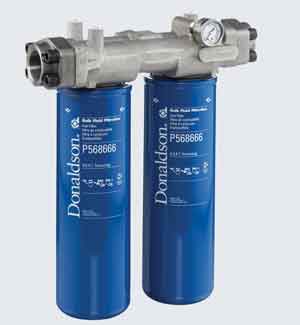 Today’s engines use what is called “high pressure common rail” (HPCR) fuel injection systems that operate upwards of 40,000 PSI. These systems require very clean fuel to operate as designed for their entire service interval. Generally speaking, hard particulate (inorganic contaminant) will cause permanent damage to the injector system, while softer particulate (organic contaminant) will cause fouling of the injector system, i.e. deposits build up on the injectors, says Scott Grossbauer, global manager, clean fuel solutions, Donaldson Co. Inc. In both cases, the engine does not run as-designed and can result in a decrease in fuel economy, an increase in emissions, and a decrease in power. Most fuel is delivered to storage tanks 500-1,000 times dirtier than what is allowed in these injection systems. Traditionally, only on-engine filters would be used to remove the contamination in the fuel to meet injection system fuel cleanliness specifications. But the requirements for HPCR fuel are so clean that a two-step approach is needed to achieve consistent cleanliness: first filter fuel in the bulk storage tank prior to use in the equipment and then with the on-engine filters. Bulk filters should remove contamination in the fuel down to a cleanliness level of ISO 14/13/11, whether the contaminant present is hard or soft. It should be noted, however, that all fuel filters are designed with the goal being to remove the hard inorganic particles. So while they will also filter the soft organic materials, life may be greatly reduced in comparison, Grossbauer notes. Besides meeting HPCR fuel cleanliness requirements, the use of bulk filtration also provides the necessary protection against any highly contaminated fuel that may be delivered (ongoing or as a one-time occurrence). By filtering prior to use in the equipment, the bulk filtration system will stop excess organic and inorganic particulate from being delivered into the customer’s equipment tanks, ensuring the onboard filters can meet the expected service intervals. If a fuel problem should exist, it may plug up the bulk filters, but not the on-engine filters. This eliminates costly unscheduled downtime and makes operation and maintenance much more predictable. Today’s engines are more sophisticated than ever and require cleaner fuel than ever before. Investing in a bulk fuel filtration system will protect your equipment against dirty fuel, eliminate unplanned downtime and keep you running. |
Packaged savings
Truck manufacturers with proprietary drivetrain components are fine-tuning powertrains to maximize fuel economy. Darry Stuart, president and CEO of DWS Fleet Management Services, said, “With automated transmissions synced up with the engine, they’re getting a very tight window of RPM, which is very fuel-efficient.”
For example, Freightliner recently announced that a new 2014 Cascadia Evolution with a GCW of 76,000 lbs. ran nonstop 1,000 mi. on a closed track at a speed of 60 MPH and delivered an impressive 10.67 MPG. The truck was very carefully spec’d for fuel economy to include a Detroit DD15 engine, a Detroit DT12 automated manual transmission in a 6×2 drivetrain configuration and wide-base tires. Regarding the demonstration, Al Pearson, chief engineer of product validation engineering at Daimler Trucks North America, said, “The use of a closed test track allowed us to demonstrate pure fuel economy potential with ambient weather conditions being the only uncontrollable factor.”
For many years, fleet managers objected to truck manufacturers using proprietary engines. It’s clear, however, that the use and integration of proprietary engines has benefited users. PACCAR’s use of its own engine line offers a good example. Trevor Lokie, Peterbilt’s product planning manager—powertrain, said, “Since being introduced, PACCAR engines have helped our customers achieve new levels of fuel efficiency and performance. The recent introduction of our MX-13 engine with a 500 HP rating and 1,850 lb.-ft. of torque is an example of this. Another is the development of a common rail fuel system designed for this engine that maintains injection pressures of 2,500 bar, further optimizing fuel consumption. The versatility of the MX-13 engine makes it ideal for a wide range of applications and business requirements.”
And Volvo has taken its D13 Eco-Torque engine rated at 425 or 455 HP and 1750 lb.-ft. of torque and teamed it with an I-Shift overdrive transmission with a 0.78:1 ratio and rear axle ratios of 2.64 to 2.69 that it calls its Exceptional Efficiency package. The system effectively lowers engine RPM at cruising speed, keeping the engine operating in its “sweet spot,” typically between 1,100 and 1,200 RPM. John Moore, powertrain product manager for Volvo, said, “ The XE package allows a Volvo engine, in combination with an I-Shift transmission, to decrease engine speed by 200 RPM at normal highway speeds, improving fuel economy by 3%. With the truck cruising at 65 MPH, the engine will be turning at 1,150 RPM.”
The importance of choosing the right filtration for engines 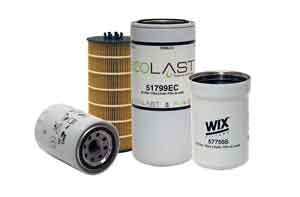 Perhaps at no other time in the heavy-duty industry has filtration been more important. The increased importance of proper engine and vehicle maintenance makes filtration an even more critical consideration that can significantly impact profitability. According to the filtration experts at Wix, when choosing the right filtration for engines, ensure you are utilizing a product recommended for the application and check regularly for any updates or changes. Premium filtration products cost a little more initially, but they produce long-term savings by lengthening maintenance intervals while continuing to protect vital engine parts as well as or better than traditional filters changed at shorter intervals. Wix suggests that fleets also should consider the equipment or vehicle and the driving and operating conditions when choosing filtration options. For example, off-highway heavy-duty construction engines operate much differently than on-the-road commercial 18-wheelers. Off-highway equipment demands even greater filter performance in efficiency, capacity and structural integrity in order to combat the harsh working environment. Improved oil, fuel, air and coolant filtration can keep vehicles on the road and out of the shop. And oil is the life-blood of an engine, which means the oil filter should never be taken for granted, especially in harsh heavy-duty operating conditions, Wix adds. Because filtration can significantly impact long-term profitability, it’s important to choose the right filtration for your engine to ensure it runs efficiently. |
Volvo also offers two XE packages with its D16 engines. A heavy spec package is rated for combination weights up to 146,000 lbs. A lighter spec XE16 is designed for use in five axle combinations weighing up to 80,000 lbs. Both offer drivers 2,050 lb.-ft. of torque at engine speeds as low as 1,000 RPM.
Mack’s McKenna said, “Mack’s integrated powertrains also make it much easier for drivers to be more efficient through the use of components like our mDrive and Co-Pilot display. If drivers are more efficient and the truck is easy to drive, then saving fuel is built into the truck and the process.”
Small engines, big power
The very makeup of engines also is changing. Ryder’s Perry said, “The weight of engines has changed. We’re seeing a migration away from 14- or 15-liter engines down to 13-liter, and some are operating lower, in the 12-liter range even though they still call themselves 13-liter engines. In doing so, they’ve been able to take weight out of the engines. They’re also using substances like compacted graphite iron to build their engine blocks. They’re building them stronger but lighter.”
Volvo’s Moore said, “Increased torque and horsepower ratings are now available for our D11 and D13 engines.” The D11 now delivers up to 405 HP and 1,550 lb.-ft. of torque, and the D13 up to 500 HP and 1,850 lb.-ft. of torque. Such ratings permit operators to maintain performance with lower engine displacement, saving weight and fuel.
Management is necessary
Engine and vehicle manufacturers are doing their part. Fleet managers must also do theirs if good fuel economy is to be achieved. Mack’s McKenna said, “The idea is to reduce fuel consumption to the lowest amount practically possible. Proper vehicle specification and the use of fuel saving options is a must. If you start off with a less-than-optimally spec’d truck, no matter what you do electronically, it will never meet expectations. The same can be said if the truck’s powertrain is spec’d correctly, yet no fuel-saving features are used. Fuel consumption disappointment will occur.
“Excessive idling is my favorite complaint,” McKenna continued. “Any time the engine is running, it’s consuming fuel to one degree or another. So we have fuel being consumed but doing nothing. At about $4 per gallon, that is a very expensive nothing.”
Filters help protect the heart of a heavy-duty vehicle 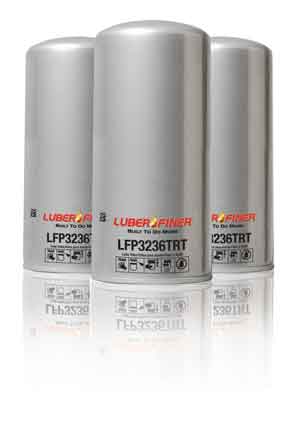 The filter experts at Luber-finer remind fleet managers that one common challenge is finding a way to maintain a preventive maintenance plan that protects the heart of the fleet’s heavy-duty vehicles—the engine. To avoid engine failures, maintenance managers must understand the oil/lube filters that protect that engine and know which filters are best for their respective applications. Taking advantage of technological advances in filters can be critical to fully protecting the engine. Different filters are more efficient at removing different-sized particles (micron rating), making filter selection an important part of the maintenance process. Owners can choose between standard oil filters or an extended-life filter. Modern technologies such as time-release technology (TRT) offer additional benefits. The innovative TRT filters provide a controlled release of a highly concentrated liquid additive into the oil supply, which helps offset the level of acid and oxidation in the oil, especially important in HD diesel vehicles with high Exhaust Gas Recirculation (EGR) settings. Fleet managers should consider this new TRT technology when looking for increased service life and extended oil change intervals. |
Peterbilt’s Lokie said, “Today’s engines are the most fuel-efficient, technologically-advanced and environmentally-friendly in the history of heavy-duty diesel engines. Regardless of how sophisticated engines get, however, two factors will always significantly impact fuel economy: optimized routes and optimized driver performance. Reducing stops and acceleration/deceleration cycles, avoiding steep grades when possible and, of course, minimizing the distance traveled, all have major impacts on fuel economy. Driver inputs such as speed and shift points also play a significant role, which is why driver training and setting the proper engine parameters are so important.
“Maintenance is another key factor,” Lokie added. “We encourage all of our customers to follow the recommend maintenance schedule for their particular vehicles and vocations. Additionally, Peterbilt and its dealer network routinely work with customers to optimize maintenance cycles that provide the greatest reliability, longest life and top performance—including fuel economy.”
Fleet managers cannot afford to do nothing, they need to explore the options. The cost of fuel is simply too expensive to ignore. New engine technology can improve a fleet’s fuel economy. When you write new vehicle specs, make sure you consider fuel economy as a top priority.




